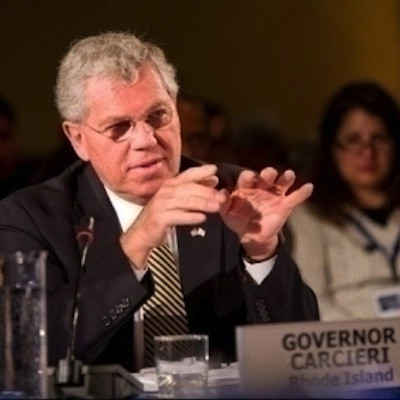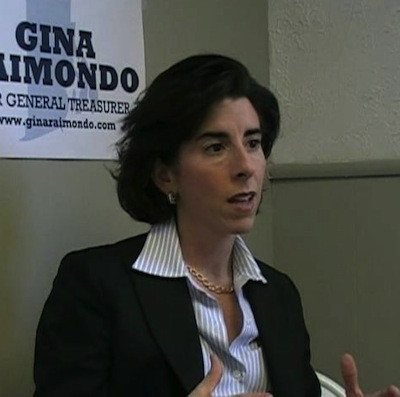RI Pension Fund Left $455 Million on Table Over 5 Year Period
Friday, March 18, 2016
The Rhode Island pension fund under-performed the Wilshire TUCS, a key benchmark that measures pension funds against one another, over the last 1, 3, 5, and 10 fiscal year periods. That under-performance has cost the state hundreds of millions in investment gains.
The fact that the fund's under-performance occurs after the state enacted pension reform in 2011 raises questions about the state's current investment strategy.
"Rhode Island has had terrible pension fund performance, regardless of what index you measure it by," said Edward "Ted" Siedle. Siedle is a former SEC lawyer and a Forbes columnist who is also a staunch critic of the RI pension fund's management strategy.
GET THE LATEST BREAKING NEWS HERE -- SIGN UP FOR GOLOCAL FREE DAILY EBLASTInvestment Gains
A spokesman for Rhode Island Treasurer Seth Magaziner disagreed. He said that the state isn't in a position to be as aggressive as other pension plans.
"Rhode Island has to invest more conservatively than most other pension plans because most other pension plans are not as underfunded as we are," said David Ortiz, the Treasury spokesman, in an email.
The Wilshire Trust Universe Comparison Service (Wilshire TUCS) is considered the most widely accepted benchmark for the performance and allocation of pension funds in North America. The Wilshire TUCS index measures institutional pension funds, like the Rhode Island pension fund, against one another.
Measuring Up
The median number that Wilshire TUCS refers to is the number that falls directly in the middle of the data of all the plans. (It's not an average. That would be all the returns added together then divided by the number of plans in the universe.) The median return means that half the plans performed better, and half the plans performed worse than the median number.
Unlike previous comparisons of the Rhode Island pension fund, which have relied on S&P 500 data, the Wilshire TUCS is comprised solely of other pension plans.
Over the last 1, 3, 5, and 10 fiscal year periods, the Rhode Island plan fell below the Wilshire TUCS median. The data reflects the state's fiscal years, which run from July 1 until June 30.
Always Below The Median
For instance, from June 30 of 2015, going back 5 years, the state of Rhode Island had an annualized pension fund return of 9.8 percent. Over that same time, the median return for a pension fund in the Wilshire TUCS index was 11.1 percent. (That number includes only funds with assets worth more than $5 billion.)
At first blush, that might not look like a massive difference. It's just a 1.3 percentage point difference. But that does not mean the fund performed 1.3 percent lower than the Wilshire TUCS median pension plan. It means the Rhode Island pension fund performed 13 percent lower.
(Think of it this way. If the Rhode Island pension fund got a 1 percent return on investment and the Wilshire TUCS median plan got a 2 percent return, we wouldn't say that the RI pension fund was 1 percent lower than the Wilshire TUCS median. We would say it was 100 percent lower. In the same respect, an 11.3 percent return is 1.3 percent higher than 9.8. That 1.3 percent divided by 9.8 equals 13.2. That means the difference is 13.2 percent.)
Is a 1 Percent Difference a Big Deal?
A similar dynamic to that hypothetical was in play at last fiscal year's end. The last fiscal year began on July 1, 2014 and ended June 30, 2015. Over that year, the Rhode Island pension got a return of 2.2 percent. The Median Wilshire TUCS plan with assets worth more than $5 billion returned 3.33 percent. That's 1.13 percentage points lower. It means the return is almost exactly 50 percent lower than the Wilshire TUCS Median return.
And those single percentage points mean tens of millions of dollars.
The Rhode Island pension fund had $7.26 billion dollars as of January 31 of this year. The fund had a similar amount when Governor Gina Raimondo became General Treasurer back in 2011. In the last fiscal year, the state failed to realize roughly $80,000,000 in gains it would have gotten if it met the median.
To make things simple and use round numbers, think of it this way. Every 1 percent that the fund gains is worth $70 million (assuming the fund is worth $7 billion). That means every single percentage point that the pension fund has fewer than the Wilshire TUCS median represents about $70 million, on a yearly basis.
Serious Money
Over 5 years, that's a serious amount of money. If the state had performed as well as the Wilshire TUCS Median plan did over the five year period in question (from June 30 going five years back), the plan would've garnered an additional $455 million. Assuming the fund was $7 billion, that's $91 million a year in missed gains. (That's the case since 1.3 percent lower means $91 million per year,) And that's a conservative estimate since the fund was more than $7 billion over that 5-year period.
Siedle, however, said that comparing the Rhode Island pension fund against the Wilshire TUCS index is not a good comparison.
"Almost all public pensions have migrated into alternative investments. So even that comparison is a generous standard, since they're all under-performing," said Siedle.
Is Wilshire Standard "Generous"?
"That's why I believe it's more appropriate to compare pension fund performance to the S&P 500," said Siedle.
The S&P 500 returned 14.1 percent over that same 5-year period.
Detractors, however, say that the plan cannot withstand the volatility to which the world famous index is subject.
Ortiz explained the fund's performance as a cautionary approach to the fund's management.
"The pension system has to pay out roughly $1 billion in benefits annually regardless of market conditions, and if the pension fund were to lose significant value in the event of a market collapse it would be nearly impossible for the fund to recover. Therefore, pension funds are invested with the goal of earning a positive return in years when the market rises, while avoiding significant losses when the market falls," said Ortiz.
A Cautionary Approach
Ortiz also pointed to the fact that the fund hasn't performed as poorly as the S&P 500 as of late.
"The strategy has saved the pension fund millions of dollars in recent months. For example, in January when the S&P 500 fell by 5%, the pension system fell less than 3% -- a difference of more than $100 million," said Ortiz.
"This is a volatile period in the financial markets, but Treasury is committed to delivering stability in this uncertain time through a balanced and diversified investment strategy," Ortiz added.
Related Slideshow: Timeline - Rhode Island Pension Reform
GoLocalProv breaks down the sequence of events that have played out during Rhode Island's State Employee Pension Fund reform.
Related Articles
- Firms Paid Millions to Manage RI Pension Money They Didn’t Have
- 38 Firms That Made the Most in Upfront Fees from RI Pension Fund
- GoLocalTV: NFL Upholds Brady’s Suspension as Pats Begin Training Camp
- Judge Taft-Carter Dismisses Pension Lawsuits, But Fight To Continue
- RI’s Economic Study Funder Manages $65 Million in RI Pension Money
- Providence Pension Watchdog Riley Releases Report, Calls for More Answers
- INVESTIGATION: Investment Firms Not Sharing Vendor Discounts with RI Pension Fund
- Both Taveras and Raimondo Claimed They Fixed Pension Underfunding - Not True
- NEW: Forbes’ Siedle Releases Latest Investigation into RI Pension System
- Moore: Elorza Must Pursue Pension Reform
- The Highest Paid Investment Firms in RI Pension System
- Riley: Rhode Island Pension Fund Meltdown in Full Force
- Riley: Providence and Rhode Island Pension Funds Hemorrhaging Money
- Moore: End Providence Pension Spiking
- Riley: Troubling Facts in Providence Pension Plan
- Riley: Why Does NY Have Funded and Honest Pension Plans?
- RI State Pension Has Not Grown Under Raimondo and Magaziner
- Riley: Junk Bond Collapse Hits RI Pension Fund
- Forbes’ Siedle Eyes New Rhode Island Pension Investigation
- Riley: Effect of Insider Politics on RI’s Pension Fund Under-Performance
- Moore: Sounding the Alarm on Pension Fund Returns
- Riley: What Happened to Rhode Island’s Municipal Pension Crisis?
- SEC Charges RI Pension Investment Firm with Failure to Disclose Conflicts
- Riley: The Odds That RI Pension Plan will be Fully Funded by 2040








































